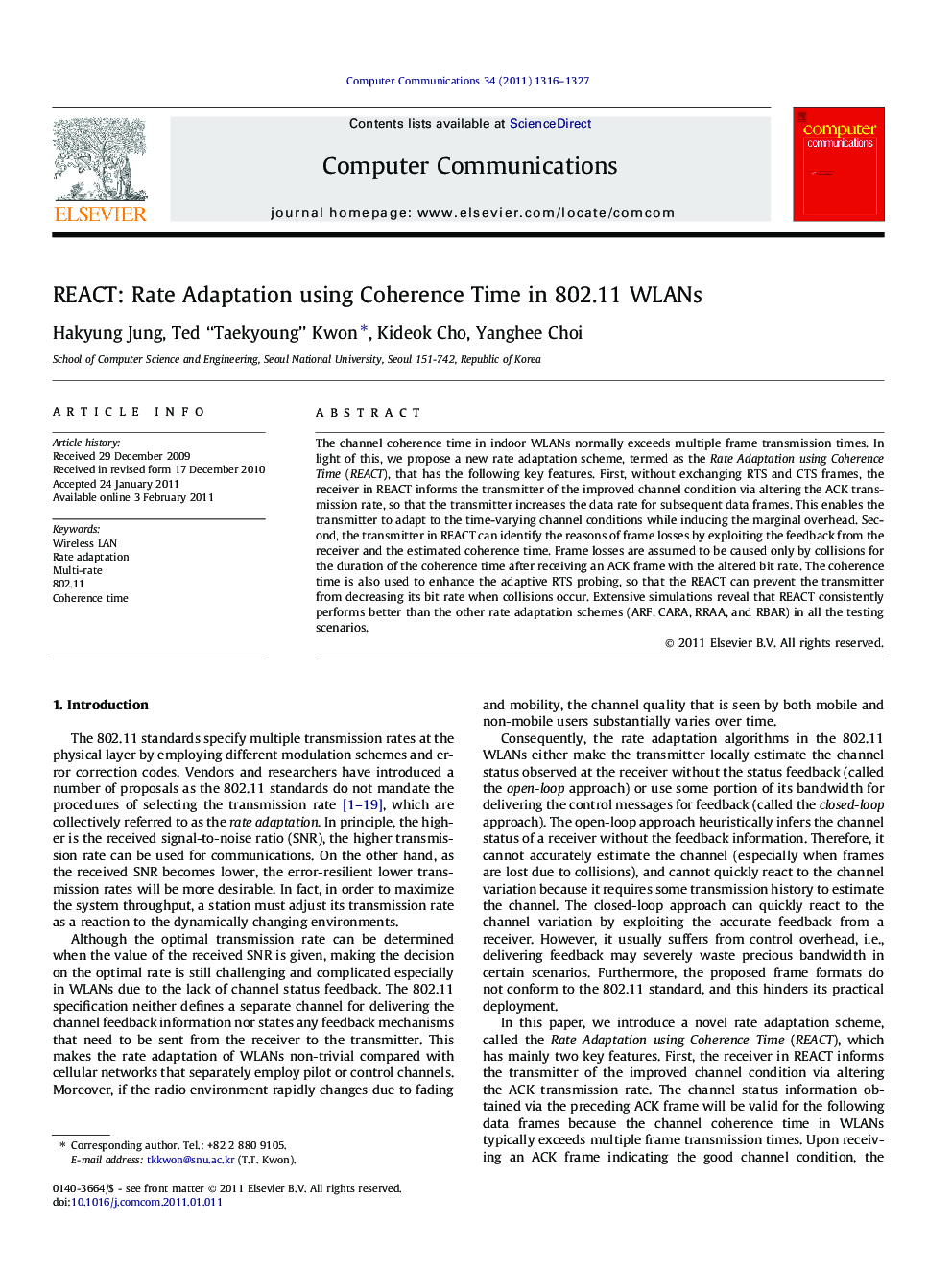| Article ID | Journal | Published Year | Pages | File Type |
|---|---|---|---|---|
| 448988 | Computer Communications | 2011 | 12 Pages |
The channel coherence time in indoor WLANs normally exceeds multiple frame transmission times. In light of this, we propose a new rate adaptation scheme, termed as the Rate Adaptation using Coherence Time (REACT), that has the following key features. First, without exchanging RTS and CTS frames, the receiver in REACT informs the transmitter of the improved channel condition via altering the ACK transmission rate, so that the transmitter increases the data rate for subsequent data frames. This enables the transmitter to adapt to the time-varying channel conditions while inducing the marginal overhead. Second, the transmitter in REACT can identify the reasons of frame losses by exploiting the feedback from the receiver and the estimated coherence time. Frame losses are assumed to be caused only by collisions for the duration of the coherence time after receiving an ACK frame with the altered bit rate. The coherence time is also used to enhance the adaptive RTS probing, so that the REACT can prevent the transmitter from decreasing its bit rate when collisions occur. Extensive simulations reveal that REACT consistently performs better than the other rate adaptation schemes (ARF, CARA, RRAA, and RBAR) in all the testing scenarios.
